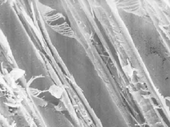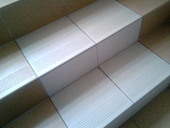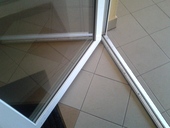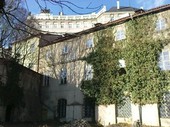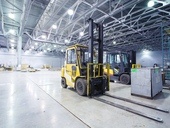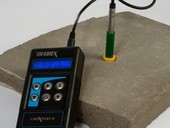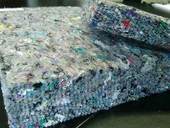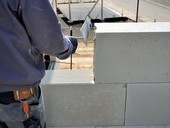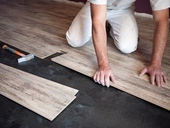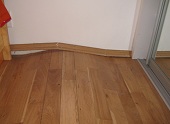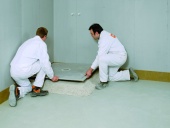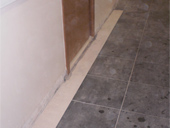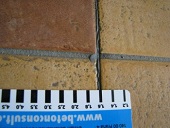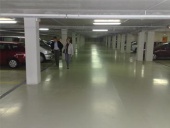The paper describes existing databases of environmental data of building products with focus on Czech tool Envimat.cz. It is an online tool, which provides environmental indicators of building materials with main purpose of providing a unified, transparent and reliable system that allows user to compare different products and structures; motivate the producers to fill in data sets of their products and improve their technologies; convince architects and designers to care about different sustainability profiles of materials; give advantage to products that have lower environmental impacts being at the same technical level than the competitor. The implementation of Envimat is divided into the three main phases: start-up phase (data from the generic database); transitional phase (combination of generic and localized data); regular operation with fully localized data.
Archiv článků od 24.1.2011 do 23.4.2012
Adhesives used for timber are more rigid and more durable than wood, but also have much greater resistance to water. Despite this fact the way of using of different synthetic resins influences design of these members in different service classes. Phenol-formaldehyde (PF), resorcinol-formaldehyde (RF), phenol-resorcinol-formaldehyde (PRF) resins are generally used as a binder for exterior grade members production. Melamine-formaldehyde (MF) and Melamine-urea-formaldehyde resin is slightly less durable than these above. Products bonded with polyvinyl acetate (PVAc) and protein-based adhesives will not withstand prolonged exposure to water or repeated high–low moisture content cycling in bonds of high density woods. Some isocyanate, epoxy, polyurethane, and cross-linked polyvinyl acetate adhesives are durable enough to use on lower density species even under exterior conditions. This paper deals with different types of adhesive from the durability point of view by comparing strength properties, and considering the possibility of IR analyzing.
Technical cannabis is a very promising material, which, thanks to its good mechanical and thermal-technical properties coming to the fore of interest in the production of building elements. The big advantage is especially fast recoverability and yield of hemp shives. This paper deals with the use of industrial hemp shives as a replacement of component of the cement plates filler.
The paper discusses the possibility of utilization of recycled laminated glass from vehicle wind screens for the production of tiles made from sintered glass. It can be used as the final floor surfaces for routine use in the interior, as well as exposed applications (outdoors, chemical plants, swimming pools, etc.). Specifically, it is analyzed in detail in the article the file of some basic parameters of the boards (flexural strength, water absorption, porosity, linear thermal expansion, surface wear, etc.).
This is continuation of the most common questions on the issue of ceramic tiles. Ing. Hana Kotorová of the Technical and Test Institute for Construction in Pilsen highlights the most frequent problems of ceramic tiles, which may surprise if the basic rules from specification to completion of work are underestimated, and if the theory is not consistent with practice.
In this paper, we divided into two parts, are the most common questions on the issue of ceramic tiles. Ing. Hana Kotorová of the Technical and Test Institute for Construction in Pilsen highlights the most frequent problems of ceramic tiles, which may surprise if the basic rules from specification to completion of work are underestimated, and if the theory is not consistent with practice.
One of the oldest remedial measures include insulation with air cavities. The most effective solution is to create a nationwide voids under floors designed to ensure air movement. This leads to diffusion of water vapor structures and thereby reduce moisture. These measures can not be undertaken alone, they are always part of a combination of remedial interventions. An example of such a solution is given on a complicated historical building in the middle of Prague - in the palace, which is situated in steep terrain notch below the Prague Castle.
Base layer of the floor, either concrete slabs or anhydrite based, does not at first glance, but can significantly affect the final aesthetic appearance and functionality and durability of the wear layer flooring. In today's hectic the technological breaks are getting shorten to a minimum, often laying the surface layer is processing, although the substrate is not yet ready. It is therefore important to check its readiness (ie humidity) before installing the final layer in an appropriate manner. Post presents the methods used at home and abroad to determine the moisture condition of the base layer of the floor. For each method there are presented their advantages and disadvantages and limitations.
Ensure environmentally friendly disposal and possible recycling of old and damaged clothing is quite problematic in practice. The problem with waste disposal of textiles is the fact that clothing is a waste mixture of natural and synthetic fibers. The paper deals with possibilities of development and production of insulation materials based on waste textile fibers and their subsequent application in modern floor construction.
Company Betonconsult held in September for the sixth annual conference FLOORS, complemented by the issue of surface treatments. The conference is an annual source of unique information on the best solutions and latest innovations in the field. This year the most important topic was draft changes to the standard ČSN 74 4505th The paper provides the text marked with the standards proposed amendments. You can join the comments. Strike through text is proposed for deletion, underlined for completion.
Family houses belong among the simple structures that are usually built with a classical way. Although the technology of construction is not difficult, it is possible for gross neglect of basic technological practices and the protection of buildings during construction to cause such damage, which is difficult to repair, even for the increased financial costs. Evidence of this is an example of one family house for individual living in the suburb of Prague on the basis of expert opinion.
As a conductive surface of terraces, pavings are subject to changes in volume – shrinkage and streching. Shrinkage of adhesives is a result of hardening and drying (ripening) or cooling (especially in winter). It depends on time, relative humidity and the size of the cross sections. Streching is caused by the difference in temperatures above the freezing point (temperatures in summer are critical) with the base temperature at which the paving was laid down.
The paper describes the role and necessity of water in floor screeds and provides examples of damages caused by moisture. Water is an integral part of many of the widespread construction materials. However, in relation to floor toppings, it poses a risk to their durability. Recent examples show that floor damages caused by moisture are still a current issue. Partly due to the design of potentially hazardous structures and partly due to incorrect detail implementation or to the pressure to shorten necessary technological pauses.
Dry floors are among the proven and technically perfect materials of our times. The paper brings attention to the need to know about what should be below and above the structure. Only then these structures will be realised without mistakes by both designers and builders. The system of floor layers is an important link on the chain of fast, economical and modern building methods. It is important to know not only the structure, but also the composition and design of the dry flooring systems, the design solutions that use dry flooring elements and aim to improve the acoustic and technical thermal parameters of the floors.
Currently, in the EU, the demand for new organic materials based on rapidly renewable natural sources is increasing. These materials are not only used for the new low energy and passive buildings, but also in existing buildings, specially during their renovations. Unlike those commonly used today, these natural materials have acoustic insulation properties, which make them ideal to be used on the insulation of floating floors. The paper deals with a comprehensive assessment of the insulation properties of hemp based materials, which can be used in floating floors, specially in terms of their acoustic insulation properties and also in terms of the total utility properties of these floating floors.
Unfortunately, the issue of impact noise transfer between floors is still sidelined. The trasnfer of impact noises can happen between directly neighbouring areas and also between spaces separated by other rooms. The solution to this can be very expensive and in some cases, difficult to carry out (e.g. floors connected by stairways or elevator shafts). It is therefore advisable to consult someone with expertise in acoustics during the design phase.
The paper focuses on explaining the causes of defects in ceramic materials that were applied in a seemingly stable substructure or layer. It brings attention to volume changes and also to elastic and plastic deformations of reinforce concrete floor structures, which can cause enough stress in surface layers consisting of tiles to lead to cracking or delamination. The examples show how and under what conditions these defects are manifested.
Deficiencies in the floors of collective parking spaces are often claimed. How are these defects caused by an improper design of the structure? Requirements of developers for the maintenance of the floors of the parking spaces. Requirements for floors of collective parking spaces within the law and standards. Recommendations for the design of collective parking spaces.
zpět na aktuální články

